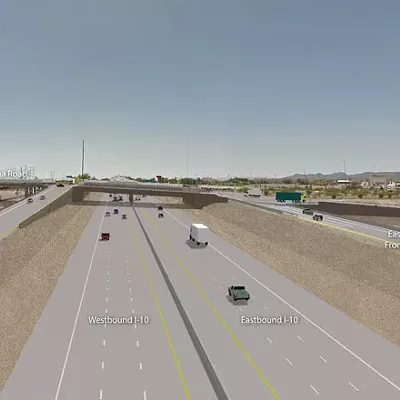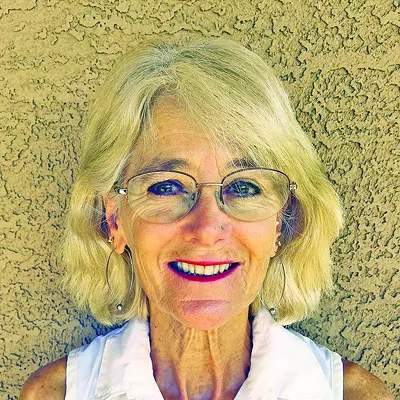Nearly 150 people were there, mostly opposed--but only five were allowed to speak, and that only after a potentially ugly confrontation, with police called in, after the board voted unanimously for the study without hearing from a single member of the public. I was one of the five, and I simply refused to leave the microphone until I was heard.
Most of the opposition focused on the wildlife mitigation corridor that was established to have a place for animal movement when the Central Arizona Project canal was built. Indeed, living in nature is why many of us live out here. My mate, Kaitlin, and I like that there are mountain lions and badgers in the neighborhood, that coyotes stir up neighborhood dogs at night, that we can see two Harris' hawks arguing with a great horned owl in my yard.
But the bypass is wrong not just because of wildlife: It would destroy a community.
Picture Rocks was once known as an outlaw wildcat development of manufactured homes inhabited by meth-heads and motorcycle gangs. One person called it "Tweakerville" when Kaitlin and I said we were moving here five years ago; "Hell's Angel City," another said. There was truth to those charges, but things were changing. Neighbors formed Citizens for Picture Rocks and set out to reclaim the community. They have largely succeeded, winning crucial support from District 3 Pima County Supervisor Sharon Bronson, former State Rep. Jennifer Burns (a Picture Rocks neighbor) and the grant-dispensing folks at PRO Neighborhoods and the Pima County Department of Community Development and Neighborhood Conservation. The results are two schools, a community center, a park, a swimming pool, a clinic, a sheriff's station, a BMX/skate park in the works, and other amenities.
The people who live here are often hardscrabble folks working long hours, retired military families, young families seeking truly affordable housing, and independent people who like their solitude and are happy to share their property with quail and roadrunners and snakes and lizards. We are people who care for the land, and for each other.
When I was hospitalized several months ago, neighbors brought food and support to Kaitlin and sent me cards, ignoring the fact that we are often on different sides of the political fence. A thrift store and diaper bank exist at an all-volunteer community center, and more volunteers are going over the hill daily to gather up surplus food and bring it back to distribute to those in need. There are volunteers who, twice yearly, pick up trash along three adopt-a-road stretches. Picture Rocks is a community that can take pride in itself, and that community is what is most at risk if the Interstate 10 bypass proceeds. That the State Transportation Board doesn't care about us is clear; they would divert hazardous cargo to the bypass (and us) and object to double-decking the present freeway because it would impede their views. Ours, presumably, do not count.
So the I-10 bypass is an environmental issue, but it is also a class issue and a question of whether, in the name of "progress," human beings as well as mountain lions can be ignored. In the early 1960s, some folks like those on the State Transportation Board had the misguided notion that a freeway was needed to link the Bay Bridge with the Golden Gate Bridge in San Francisco. A piece of it was built, blocking the traditional view down Market Street to the Ferry Building. But, hey, what's a view compared to progress? Then folks found out that the new freeway would go through the integrated working-class Haight-Ashbury, and would take out a good chunk of Golden Gate Park. We sat down in front of the bulldozers, and we stopped it.
Si Schorr said on TV that we have our "heads in the sand." His term is expiring. The fight to save the Avra Valley is not.










